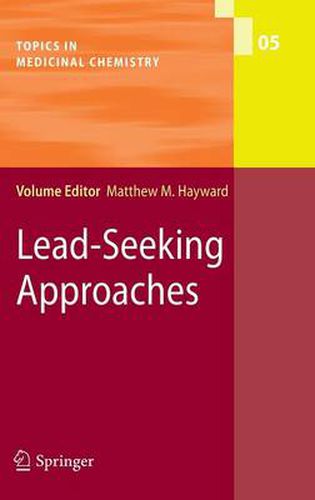Readings Newsletter
Become a Readings Member to make your shopping experience even easier.
Sign in or sign up for free!
You’re not far away from qualifying for FREE standard shipping within Australia
You’ve qualified for FREE standard shipping within Australia
The cart is loading…






This title is printed to order. This book may have been self-published. If so, we cannot guarantee the quality of the content. In the main most books will have gone through the editing process however some may not. We therefore suggest that you be aware of this before ordering this book. If in doubt check either the author or publisher’s details as we are unable to accept any returns unless they are faulty. Please contact us if you have any questions.
High quality leads provide the foundation for the discovery of successful clinical development candidates, and therefore the identi?cation of leads is an essential part of drug discovery. The process for the identi?cation of leads generally starts with the screening of a compound collection, either an HTS of a relatively large compound collection (hundreds of thousands to one million plus compounds) or a more focused screen of a smaller set of compounds that have been preselected for the target of interest. Virtual screening methods such as structure-based or pharmacophore-based searches can complement or replace one of the above approaches. Once hits are identi?ed from one or more of these screening methods, they need to be thoroughly characterized in order to con?rm activity and identify areas in need of optimization. Finally, once fully characterized hits are identi?ed, preliminary optimization through synthetic modi?cation is carried out to generate leads. Parallel optimization of all properties, including biological, physicochemical, and ADME is the most ef?cient approach to the identi?cation of leads. Hit characterization is described in the previous chapter. The focus of this chapter is on hit optimization and the identi?- tion of leads. After a general overview of these processes, examples taken from the literature since 2001 will be used to illustrate speci?c points. There are also a number of excellent reviews covering the lead identi?cation process [1-6].
$9.00 standard shipping within Australia
FREE standard shipping within Australia for orders over $100.00
Express & International shipping calculated at checkout
This title is printed to order. This book may have been self-published. If so, we cannot guarantee the quality of the content. In the main most books will have gone through the editing process however some may not. We therefore suggest that you be aware of this before ordering this book. If in doubt check either the author or publisher’s details as we are unable to accept any returns unless they are faulty. Please contact us if you have any questions.
High quality leads provide the foundation for the discovery of successful clinical development candidates, and therefore the identi?cation of leads is an essential part of drug discovery. The process for the identi?cation of leads generally starts with the screening of a compound collection, either an HTS of a relatively large compound collection (hundreds of thousands to one million plus compounds) or a more focused screen of a smaller set of compounds that have been preselected for the target of interest. Virtual screening methods such as structure-based or pharmacophore-based searches can complement or replace one of the above approaches. Once hits are identi?ed from one or more of these screening methods, they need to be thoroughly characterized in order to con?rm activity and identify areas in need of optimization. Finally, once fully characterized hits are identi?ed, preliminary optimization through synthetic modi?cation is carried out to generate leads. Parallel optimization of all properties, including biological, physicochemical, and ADME is the most ef?cient approach to the identi?cation of leads. Hit characterization is described in the previous chapter. The focus of this chapter is on hit optimization and the identi?- tion of leads. After a general overview of these processes, examples taken from the literature since 2001 will be used to illustrate speci?c points. There are also a number of excellent reviews covering the lead identi?cation process [1-6].